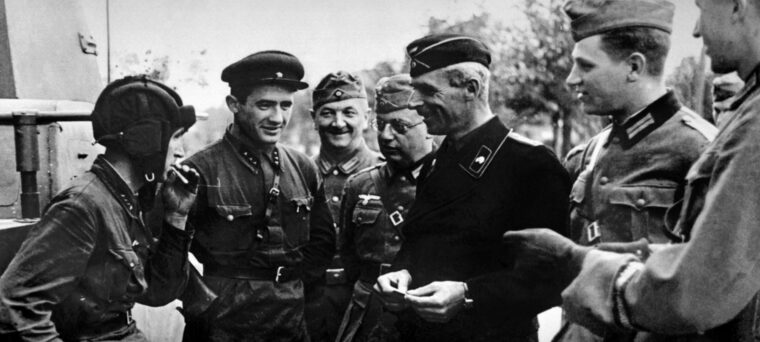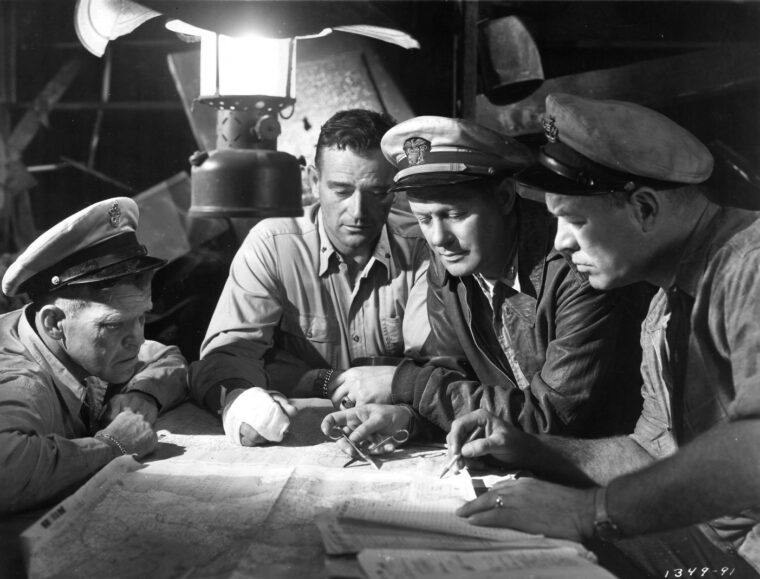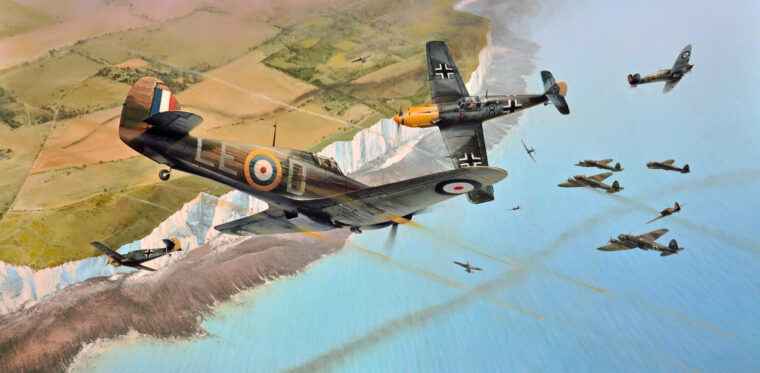
Warsaw Uprising: The Story of Bogdan Mieczkowski
By Yanek Mieczkowski“This mission is suicidal,” thought Bogdan Mieczkowski. In the autumn of 1944, the 19-year-old Polish resistance fighter battled in the Warsaw Uprising. Read more

“This mission is suicidal,” thought Bogdan Mieczkowski. In the autumn of 1944, the 19-year-old Polish resistance fighter battled in the Warsaw Uprising. Read more

On August 23, 1939, Soviet Deputy Minister of Foreign Affairs, V.P. Potemkin, waited at the Moscow Airport for Joachim von Ribbentrop, Foreign Minister of Nazi Germany. Read more

“Am over enemy submarine in position …”
Cut off in mid-transmission, this contact report came from a U.S. Read more

On Sunday, September 10, 1944, all bridges over the German-Belgian border rivers, the Our and the Saur, were dynamited. Read more

“There’s no greater feeling in the world than seeing Old Glory in a winning position.” Twenty-one-year-old U.S. Navy Ensign Joseph Bale watched the American flag raising on Iwo Jima’s Mount Suribachi from aboard the attack transport USS Dickens County Texas. Read more

British Prime Minister Winston Churchill, who rode in a cavalry charge in the Sudan in 1898, escaped from the Boers in 1899 and served for six months as a troop leader in the Western Front trenches in 1915-1916, remarked during World War II, “The only thing that ever really frightened me during the war was the U-boat peril.” Read more

The ferocious battle for the island of Saipan in the Marianas was won by U.S. Marines and U.S. Read more

All the pilots of No. 71 (Eagle) Squadron, Royal Air Force, had been ordered to report to the briefing room on the afternoon of August 18, 1942. Read more

In 1941, the Philippine Islands, 7,000 in number, an American-controlled mandate, formed a natural barrier between Japan and the rich resources of East and Southeast Asia. Read more

The Landing Craft Mechanized (LCM) carrying Army engineers and Navy beachmasters hit a mine on its way into Omaha Beach. Read more

As early as 1941, the German high command had visions of military technology that was far ahead of its time, and many innovative technological concepts were becoming reality. Read more

No sooner had the last shot of World War II been fired than a new, different kind of conflict began. Read more

With such award-winning films as Stagecoach, Young Mr. Lincoln, Drums Along the Mohawk, The Grapes of Wrath, The Long Voyage Home, and How Green Was My Valley behind him, John Ford was one of Hollywood’s most respected directors by the time World War II broke out in 1939. Read more

Early in the 20th century, the population of New Zealand was just under a million. According to official sources, 20 percent of New Zealand’s eligible manpower served in uniform during World War I. Read more

Early in the morning of July 8, 1942, in the calm waters of Caballo Bay south of Corregidor Island in the Philippines, a casco, a 12-foot by 60-foot flat-bottomed wooden diving barge, bobbed placidly in the open water 120 feet above the ocean floor. Read more

Bombed almost daily for several months and in fear of an imminent German invasion, the British were hanging on by their fingernails when September 1940 came. Read more

The Nelson King, a Boeing B-17 Flying Fortress bomber, was en route to Berlin on March 6, 1944, when it flew into a whirlwind of Luftwaffe fighters. Read more

The career of Admiral Nicholas Horthy spanned not only two world wars, but also stretched across the decades from the age of sail to atomic-powered submarines. Read more

Norvald Flaaten never expected he would appear in a movie when he signed up with the Canadian Army during World War II, but the subject of the movie and what he had to do was too good to pass up. Read more

George Sterling received a teletype message from the War Department just after 5:15 am on August 15, 1945. Read more